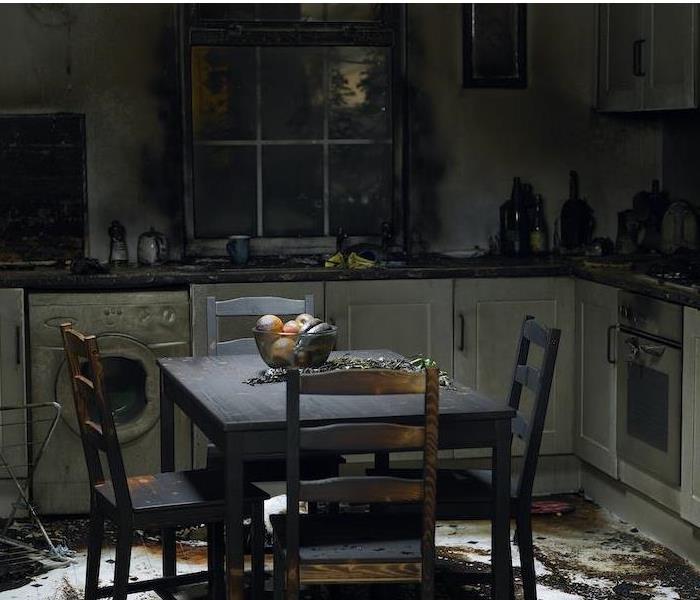Why Is The Type Of Soot Important When Planning Fire Damage Restoration?
9/17/2020 (Permalink)
Great Neck Homeowners Are Looking For Thorough Fire Damage Recovery.
People living in Great Neck understand the importance of fire safety in the home. After all, a disaster is often costly to recover from, and means dealing with insurance, upheaval, and loss.
Unfortunately, a disaster can still happen, no matter how careful you are. If you need fire damage restoration in Great Neck, you need a service that understands the fire theory and the impact of soot damage.
What is soot?
Soot is the residue left over after the incomplete burning of organic materials. Soot is composed mostly of carbon but may also contain traces of metal, chemicals, and dust. Soot can circulate and coat many unaffected rooms after a small, isolated house fire. The cleanup of these residues can be extremely difficult, especially if the correct tools and products are not used.
Cleaning away soot is a significant part of fire restoration, as it looks unsightly and often smells terrible.
Are there different kinds of soot?
There are several different kinds of soot, including:
- Dry soot, which forms when organic materials burn fast and hot
- Wet soot, which begins when plastics and rubbers burn in a slowly smoldering fire
- Protein soot, which starts when proteins (such as meat) burn in a fire, or even through overcooking
Why is understanding soot significant in fire restoration?
Different types of soot require different cleaning methods, which is why a thorough analysis is an integral part of fire damage remediation.
- Dry soot produces the lightest particles, which are relatively easy to brush or vacuum away from surfaces
- Wet soot produces a sticky residue which smears over surfaces and has a pungent odor
- Protein soot residues are harder to see, but cling hard to surfaces and have a particularly noxious smell
Although dry soot is easier to wipe away, the fire's higher temperature can mean more extensive damage to surfaces. Protein soot often forms during a kitchen fire, and so SERVPRO technicians must be extra mindful about electrical appliance safety.
How can SERVPRO help?
Our technicians use a range of cleaning techniques to get rid of soot. Depending on the situation, we can choose between dry and wet cleaning, vacuuming, abrasion, spot cleaning, or even baking soda blasting to remove soot from surfaces. We also deodorize your home afterward, to get rid of lingering smoky smells.
For help with fire damage restoration, call SERVPRO of Great Neck / Port Washington at (516) 767-9600.




 24/7 Emergency Service
24/7 Emergency Service
